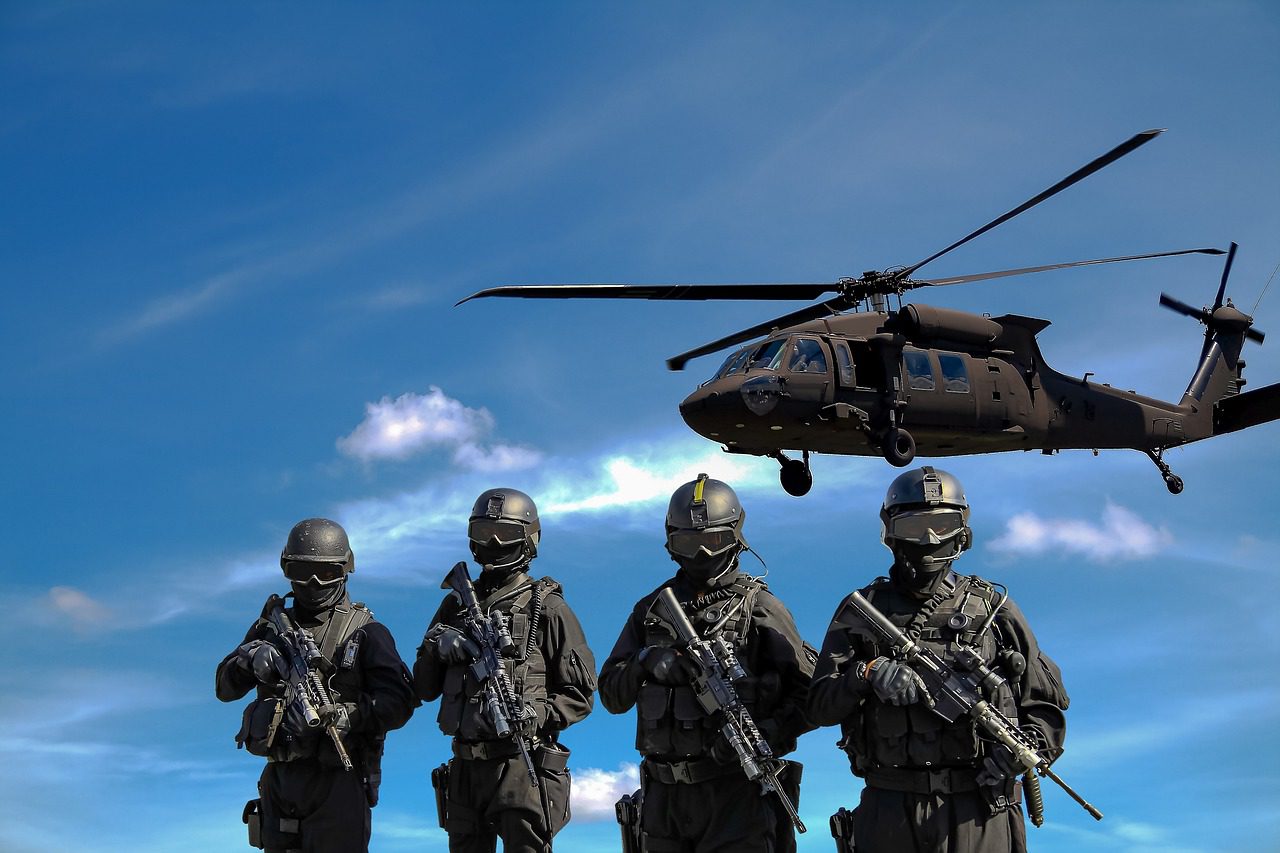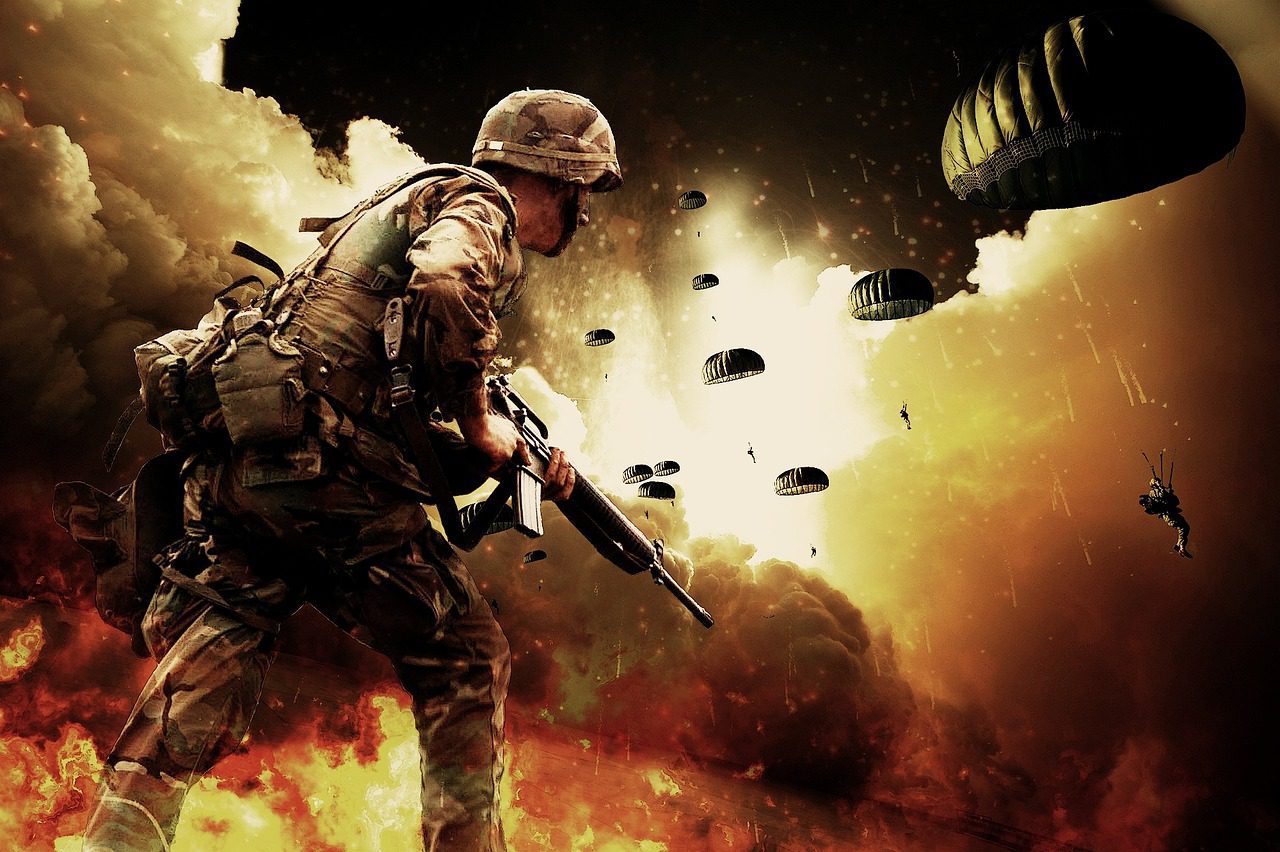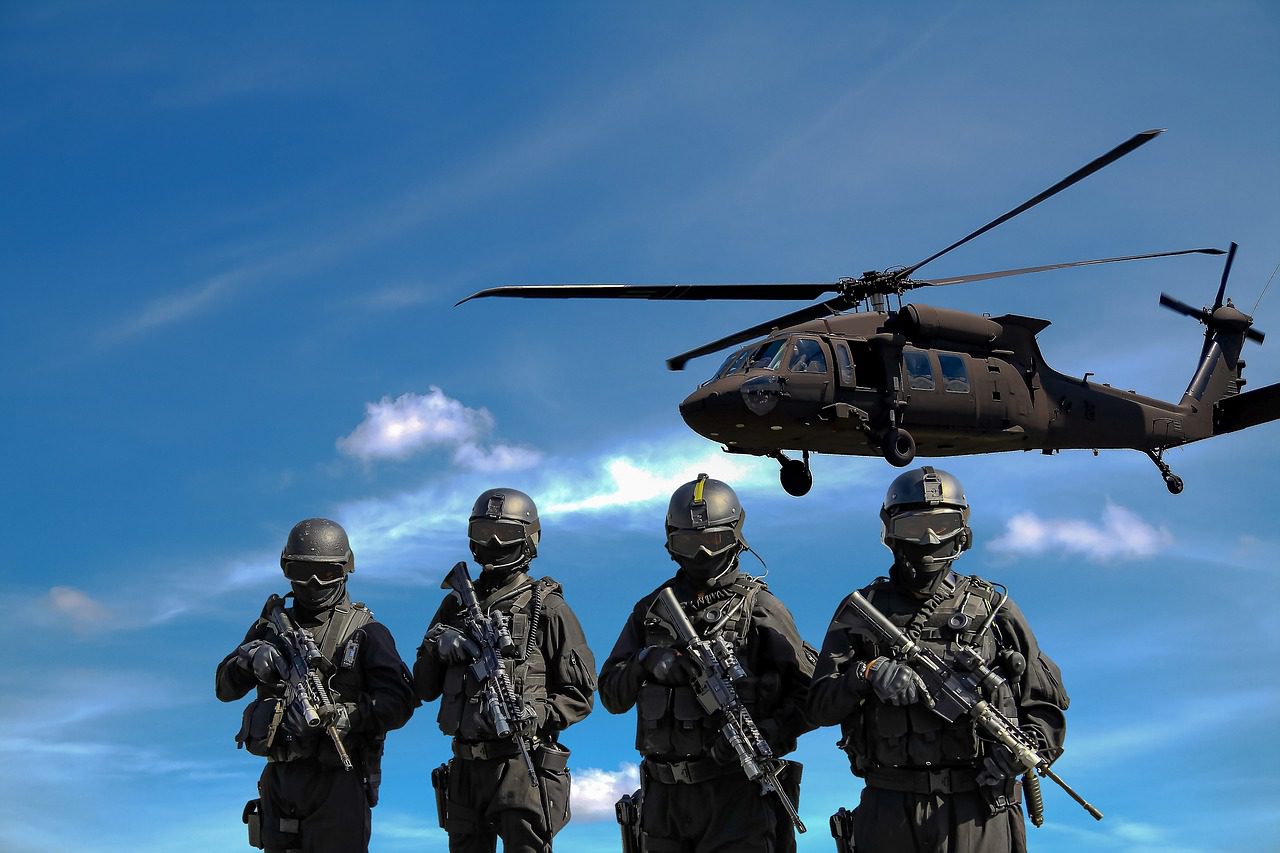

Attention all military enthusiasts and night vision aficionados! We have a burning question to solve today: What type of night vision technology does the elite Army Rangers employ? The gripping world of night vision goggles and advanced optics has always fascinated us, and today we’re here to satisfy your curiosity by unraveling the secrets behind the sought-after night vision gear used by these fearless warriors.
From the covert operations in pitch-black darkness to the strategic surveillance missions under the moonlit sky, get ready to uncover the cutting-edge technology that empowers the Army Rangers in their quest for national security and protection.


This image is the property of pixabay.com.
Overview
Introduction to Army Rangers
Army Rangers are a highly skilled and elite group of soldiers who specialize in conducting difficult and dangerous military operations. They are trained to execute missions under various conditions, including low-light or nighttime scenarios.
One crucial tool that ensures their success in these situations is night vision technology. Night vision devices provide Rangers with the ability to see in the dark, giving them a significant advantage over their adversaries.
Importance of Night Vision for Army Rangers
Night vision technology is of utmost importance for Army Rangers due to the nature of their operations. Many military operations are conducted during the cover of darkness to maximize stealth and surprise.
Without the assistance of night vision devices, Rangers would be severely handicapped in their ability to observe the enemy, navigate through complex environments, and identify potential threats. Night vision technology enhances their situational awareness, allowing them to effectively carry out vital missions and increase their chances of success.
Generation of Night Vision
Introduction to Night Vision Generations
Night vision technology has evolved significantly over the years, with advancements being made in each generation. These generations represent the different levels of capability and quality of night vision devices. Currently, there are four generations of night vision technology: Generation 1 (Gen 1), Generation 2 (Gen 2), Generation 3 (Gen 3), and Generation 4 (Gen 4).
Functionality and Features of Each Generation
Each generation of night vision technology offers improvements in image quality, clarity, and sensitivity. Gen 1 devices were the first to be widely available and had limited resolution and clarity. Gen 2 devices introduced better image intensifier tubes, resulting in clearer images with reduced distortion.
Gen 3 brought about major improvements in low-light performance, providing enhanced visibility in extremely dark conditions. Gen 4 devices offer even greater image quality, with improved resolution and sensitivity.
Advancements in Night Vision Technology
Night vision technology continues to advance rapidly, driven by the demands of military operations. Advancements include improved image resolution, extended battery life, reduced size and weight of devices, and enhanced performance in challenging environments. These advancements enable Army Rangers to carry out their missions with superior vision and increased effectiveness.
Night Vision Devices Used by Army Rangers
PVS-14 Monoculars
One of the most commonly used night vision devices by Army Rangers is the PVS-14 monocular. This compact and versatile device can be handheld, head-mounted, or weapon-mounted, providing flexibility and adaptability in various operational scenarios. The PVS-14 features a Gen 3 image intensifier tube, offering exceptional low-light performance and clarity.
It also includes a built-in infrared illuminator, allowing Rangers to see in total darkness. With its durability, reliability, and compact design, the PVS-14 is a trusted companion for Army Rangers on nocturnal missions.
AN/PSQ-20 Enhanced Night Vision Goggles
The AN/PSQ-20 Enhanced Night Vision Goggles (ENVG) provides Army Rangers with unparalleled situational awareness. This advanced device combines image intensification technology with thermal imaging capabilities, providing a comprehensive view of the surrounding environment.
The ENVG integrates cutting-edge technology to overlay thermal images onto the night vision image, allowing Rangers to distinguish between different heat signatures and identify potential threats more easily. With its advanced features and superior performance, the AN/PSQ-20 ENVG significantly enhances the effectiveness and safety of Army Rangers during nocturnal operations.
AN/PVS-15 Binoculars
The AN/PVS-15 Binoculars are another vital night vision device used by Army Rangers. These binoculars offer the advantage of improved depth perception due to their dual-tube design. They provide Rangers with clear, amplified vision, even in extremely low-light conditions.
The AN/PVS-15 Binoculars are equipped with Gen 3 image intensifier tubes, ensuring excellent image quality and resolution. With their ergonomic design, comfortable fit, and reliable performance, these binoculars greatly assist Rangers in their reconnaissance and surveillance tasks, allowing for more accurate and detailed observations during nighttime operations.
AN/PVS-31 Helmet-Mounted Goggles
The AN/PVS-31 Helmet-Mounted Goggles or “Skull Crusher” is a critical piece of night vision equipment used by Army Rangers. These goggles are designed to be mounted directly onto the helmet, providing hands-free operation and optimal comfort during extended periods of use. The AN/PVS-31 features dual-tube technology, offering exceptional depth perception and improved situational awareness.
These goggles are equipped with Gen 3 image intensifier tubes and built-in infrared illuminators, enabling Rangers to effectively operate in low-light conditions. With their rugged construction, adjustable fit, and superior performance, the AN/PVS-31 Helmet-Mounted Goggles equip Army Rangers with a tactical advantage on nighttime missions.
PVS-14 Monoculars
Overview and Specifications
The PVS-14 monocular is a versatile night vision device widely used by Army Rangers. It weighs approximately 350 grams and is designed for one-eyed use, providing a compact and lightweight solution for nocturnal operations.
The PVS-14 utilizes a Gen 3 image intensifier tube, offering superior low-light performance and clarity. It has a resolution of 64-72 lp/mm (line pairs per millimeter) and a minimum system gain of 2,000 fc/fL.
Features of PVS-14
The PVS-14 is equipped with various features that enhance its functionality and effectiveness. It includes a built-in infrared illuminator, allowing Rangers to see in total darkness. It has a focusable objective lens, enabling quick adjustments to optimize image clarity.
The PVS-14 also offers variable gain control, allowing users to adjust the brightness level based on the ambient light conditions. It can be hand-held, head-mounted, and weapon-mounted, providing flexibility and adaptability in different operational scenarios.
Benefits of PVS-14 for Army Rangers
The PVS-14 monocular offers numerous benefits to Army Rangers in the field. Its compact and lightweight design ensures portability and ease of use, minimizing the burden on the soldiers during missions. The Gen 3 image intensifier tube provides exceptional low-light performance, allowing Rangers to effectively navigate through dark environments and identify potential threats.
The built-in infrared illuminator extends the device’s capability, enabling Rangers to operate in complete darkness. The versatility of the PVS-14, with its multiple mounting options, ensures that it can be easily adapted to various operational requirements. Overall, the PVS-14 monocular enhances the situational awareness and effectiveness of Army Rangers during nighttime operations.


This image is the property of pixabay.com.
AN/PSQ-20 Enhanced Night Vision Goggles
Overview and Specifications
The AN/PSQ-20 Enhanced Night Vision Goggles (ENVG) are a cutting-edge night vision device used by Army Rangers. Weighing approximately 1.5 pounds, these goggles are designed to be worn on the head, providing hands-free operation and optimal comfort.
The ENVG incorporates both image intensification and thermal imaging technologies, offering a comprehensive view of the surrounding environment. It has a resolution of 64-72 lp/mm (line pairs per millimeter) and a minimum system gain of 2,000 fc/fL.
Features of AN/PSQ-20
The AN/PSQ-20 ENVG boasts several advanced features that set it apart from traditional night vision devices. It combines image intensification technology with thermal imaging, enabling Rangers to identify potential threats based on both heat signatures and low-light imagery.
The ENVG incorporates a wide field of view, allowing for enhanced peripheral vision and situational awareness. It also includes a wireless capability to transmit video and data, facilitating real-time communication and coordination among Rangers in the field.
Benefits of AN/PSQ-20 for Army Rangers
The AN/PSQ-20 ENVG provides significant benefits to Army Rangers during nighttime operations. Its integration of image intensification and thermal imaging ensures a comprehensive view of the surrounding environment, enabling Rangers to effectively locate and identify potential threats. The wide field of view enhances situational awareness, allowing Rangers to detect and respond to threats from various angles.
The wireless capability of the ENVG promotes seamless communication and coordination among team members, enhancing overall operational efficiency. With its advanced features and superior performance, the AN/PSQ-20 ENVG is a vital tool that empowers Army Rangers to carry out their missions with enhanced effectiveness and safety.
AN/PVS-15 Binoculars
Overview and Specifications
The AN/PVS-15 Binoculars are specialized night vision binoculars used by Army Rangers. These binoculars are designed to be worn on the head, providing a comfortable and stable viewing experience. They weigh approximately 1.5 pounds and offer a dual-tube design, enhancing depth perception and providing a more realistic representation of the environment.
The AN/PVS-15 Binoculars utilize Gen 3 image intensifier tubes, offering superior image quality and clarity. They have a resolution of 64-72 lp/mm (line pairs per millimeter) and a minimum system gain of 2,000 fc/fL.
Features of AN/PVS-15
The AN/PVS-15 Binoculars incorporate several features that enhance their usability and performance. They offer a wide field of view, allowing Rangers to observe their surroundings with enhanced peripheral vision.
The binoculars include adjustable interpupillary distance and diopter adjustments to accommodate individual preferences and ensure optimal comfort during extended periods of use. The AN/PVS-15 Binoculars also have a built-in infrared illuminator, providing visibility in complete darkness.
Benefits of AN/PVS-15 for Army Rangers
The AN/PVS-15 Binoculars offer numerous benefits to Army Rangers in their nighttime operations. The dual-tube design enhances depth perception, enabling Rangers to accurately assess distances and navigate through complex environments.
The superior image quality and clarity provided by the Gen 3 image intensifier tubes allow for precise target identification and threat detection. The wide field of view enhances situational awareness, ensuring that Rangers can effectively monitor their surroundings and respond to potential threats from different directions.
With their comfortable fit and reliable performance, the AN/PVS-15 Binoculars are a valuable asset for Army Rangers on nocturnal missions.


This image is the property of pixabay.com.
AN/PVS-31 Helmet-Mounted Goggles
Overview and Specifications
The AN/PVS-31 Helmet-Mounted Goggles, also known as the “Skull Crusher,” is a critical night vision device used by Army Rangers. These goggles are designed to be directly mounted onto the helmet, providing hands-free operation and optimal comfort.
The AN/PVS-31 weighs approximately 1.2 pounds and offers a dual-tube design, enhancing depth perception and situational awareness. It utilizes Gen 3 image intensifier tubes, ensuring exceptional image quality and visibility. The AN/PVS-31 has a resolution of 64-72 lp/mm (line pairs per millimeter) and a minimum system gain of 2,000 fc/fL.
Features of AN/PVS-31
The AN/PVS-31 Helmet-Mounted Goggles incorporate several features that make them an indispensable tool for Army Rangers. They offer a wide field of view, allowing for enhanced peripheral vision and situational awareness.
The goggles include an adjustable diopter, ensuring optimal individual focus. The AN/PVS-31 also features a built-in infrared illuminator, enabling Rangers to operate in total darkness. The device has an auto-off function to preserve battery life and a quick-release mount for easy attachment and detachment from the helmet.
Benefits of AN/PVS-31 for Army Rangers
The AN/PVS-31 Helmet-Mounted Goggles offer numerous benefits to Army Rangers during their nighttime operations. The dual-tube design provides improved depth perception, allowing for accurate distance assessment and precise target identification. The wide field of view enhances situational awareness, enabling Rangers to detect threats from various angles and respond accordingly.
The included infrared illuminator ensures visibility in complete darkness, allowing for effective navigation and threat detection. The adjustable diopter and quick-release mount enhance user comfort and operational efficiency. With their reliable performance and ergonomic design, the AN/PVS-31 Helmet-Mounted Goggles are an essential component of an Army Ranger’s night vision equipment arsenal.
Other Night Vision Equipment Used by Army Rangers
Infrared Illuminators
In addition to night vision devices, Army Rangers utilize infrared illuminators to enhance their visibility in low-light or no-light conditions. Infrared illuminators emit infrared light, which is invisible to the naked eye but can be detected and amplified by night vision devices. These illuminators provide an additional light source for Rangers, enabling them to effectively navigate, communicate, and identify potential threats in dark environments.
Helmet-Mounted Cameras
To document their missions and gather valuable intelligence, Army Rangers often utilize helmet-mounted cameras in conjunction with their night vision devices. These cameras capture high-resolution images and videos in low-light conditions, allowing for detailed after-action analysis and debriefing. Helmet-mounted cameras provide a valuable tool for Rangers to document their operations, share critical information, and improve future mission effectiveness.
Laser Range Finders
Laser range finders are another important piece of equipment used by Army Rangers in conjunction with their night vision devices. These devices use laser beams to accurately determine the distance from the soldier to a target or object. Laser range finders assist Rangers in conducting precise target acquisition, allowing for effective engagement and minimizing the risk of collateral damage
. By combining laser range finders with night vision technology, Rangers are equipped with the necessary tools to accurately assess their environment and make informed decisions during nighttime operations.


Training and Usage Protocols for Army Rangers
Importance of Proper Training
Utilizing night vision technology effectively requires specialized training and expertise. Army Rangers undergo comprehensive training to familiarize themselves with the features, functions, and limitations of various night vision devices.
Training covers topics such as proper operation, maintenance, and troubleshooting. Rangers also receive instruction on tactics, techniques, and procedures specific to nighttime operations, ensuring they can maximize the benefits of their night vision equipment.
Protocols for Night Vision Usage
To ensure the safe and effective use of night vision devices, specific protocols are followed by Army Rangers. These protocols cover areas such as proper fitting and adjustment of devices, evaluating ambient light conditions, employing appropriate target identification procedures, and employing countermeasures to minimize the risk of detection by adversaries. Rangers are trained to effectively manage power usage and to adapt their tactics based on the limitations and capabilities of their night vision equipment.
Maintenance and Care of Night Vision Equipment
The maintenance and care of night vision equipment are essential for ensuring its longevity and optimal performance. Army Rangers are trained in the proper cleaning, storage, and handling of their night vision devices. Regular inspections and maintenance routines are conducted to identify and address any issues or damages. Rangers also receive instruction on battery management to ensure devices have sufficient power for each mission.
By following proper maintenance and care protocols, Army Rangers can rely on their night vision equipment to perform at its best when it matters most.
Conclusion


Critical Role of Night Vision for Army Rangers
Night vision technology plays a critical role in the success and safety of Army Rangers during nighttime operations. The ability to see in the dark enhances their situational awareness, allowing them to navigate complex environments, detect potential threats, and effectively execute their missions.
Night vision devices, such as the PVS-14 Monoculars, AN/PSQ-20 Enhanced Night Vision Goggles, AN/PVS-15 Binoculars, and AN/PVS-31 Helmet-Mounted Goggles, equip Rangers with the tools they need to excel in challenging low-light scenarios.
Continued Advancements in Night Vision Technology
Night vision technology continues to advance rapidly, driven by the needs and demands of military operations. Ongoing advancements include improved image resolution, extended battery life, reduced size and weight of devices, and enhanced performance in adverse weather conditions.
These advancements ensure that Army Rangers are equipped with the most cutting-edge technology, enabling them to maintain their edge on the battlefield. As night vision technology continues to evolve, so too will the capabilities and effectiveness of Army Rangers in fulfilling their vital military missions.




